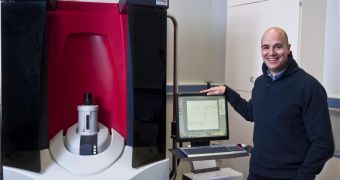This week has turned into one of unusual but very promising research milestones. We've seen a storage technology that uses sound to enhance magnetic capacity, and now we get to see magnetism used for something else.
We'll cut right to the chase: a group of scientists from the University of Cambridge has reached the conclusion that magnetism can be used for processor cooling purposes.
Normal cooling systems, from processor solutions to freezers, air conditioners and refrigerators, make use of compression and expansion of gas.
Compressed gas turns into a liquid state, but evaporates when again expanded. To evaporate, it needs heat, which it pulls from the environment.
Obviously, this doesn't have anything to do with fansinks and such, but it does explain why liquid nitrogen and helium work so well as cooling solutions during overclocking stints.
Cambridge researchers think they have an alternative to gas: magnetism. A material is put through magnetizing and demagnetizing cycles, in order to create the magnetocaloric effect.
The temperature of certain materials is modified when they are introduced in a magnetic field. Unfortunately, magnetism also tends to mess with electronic chips, computer memory and basically all miniaturized technological devices.
Researchers Luis Hueso, Andreas Berger and Odrej Hovorka of nanoGUNE have the solution: magnetism without magnetic fields: the straining of materials.
“By straining the material and then relaxing it an effect similar to that of a magnetic field is created, thus inducing the magnetocaloric effect responsible for cooling,” explained Luis Hueso, leader of the nanodevices group at nanoGUNE and researcher in this study.
“This new technology enables us to have a more local and more controlled cooling method, without interfering with the other units in the device, and in line with the trend in the miniaturization of technological devices.”
Now all it takes is to find efficient, economical and environmentally friendly materials to research on. 20nm films consisting of lanthanum, calcium, manganese and oxygen have been developed so far.

 14 DAY TRIAL //
14 DAY TRIAL //